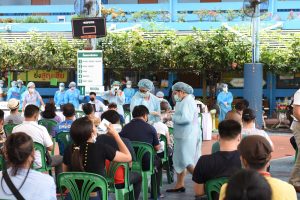What is an Endoscopy?
Endoscopy is a minimally invasive procedure in which an endoscope is inserted into an opening or small incision in the body. An endoscope is a long, thin and flexible tube with a light and camera attached at the end. The images inside the body are captured by the endoscope and projected onto a monitor.
Endoscopy is carried out for:
- Diagnosis
- by examining internal organs, surgeons may be able to determine cause of patient’s symptoms
- for biopsy i.e. surgical removal of tissue for lab testing, to confirm diagnosis of cancer or other diseases
- Treatment
- Surgical removal of tumours or polyps
- Cauterisation (seal using heat) of bleeding vessel
| Type of Endoscopy | Target Area | Where Scope is Inserted | Purpose |
| Bronchoscopy | Airways/lungs | Into the nose or mouth |
|
| Hysteroscopy | Uterus (womb) | Through the vagina |
|
| Cystoscopy | Bladder | Through the urethra |
|
| Gastroscopy | Esophagus, stomach or top part of small intestine | Through the mouth |
|
| Colonoscopy/
Sigmoidoscopy |
Colon/rectum | Into the anus |
|
| Arthroscopy | Joint | Through an incision near the affected joint |
|
| Laparoscopy | Abdomen/pelvis | Through small incisions in the abdomen/pelvis |
|
Table 1: Types of Endoscopy
Read on to know more about what goes on typically for an endoscopic procedure!
Before the Endoscopy
Prior to the procedure, instructions will be provided by the medical team depending on the type of endoscopy that is going to be performed. Some of the following preparation might be required:
1. Dietary restrictions
- Fasting for a designated period of time e.g. 12 hours before the procedure.
- Going on a low fibre diet for a few days before endoscopies involving the large intestine (colonoscopy) or lower part of the bowels and rectum (sigmoidoscopy).
2. Bowel preparation
- Laxatives might be prescribed for certain endoscopies involving the gut to remove stools from the colon for better visibility during the process.
3. Medications
- Antibiotics may be prescribed to prevent infection if needed.
- Physicians should be informed of any medications or supplements being consumed, so appropriate medical advice can be given. For instance, blood thinners e.g. warfarin, aspirin or supplements like fish oil, gingko which have been suggested to increase bleeding risk may need to be stopped days before surgery. It is important to note that any medical therapy should NOT be stopped without prior consultation with the doctor.
During the Endoscopy
Endoscopies are usually not painful and are generally well-tolerated. Patients often only experience a mild discomfort, that might be similar to a feeling of indigestion or sore throat depending on the type of endoscopy being carried out.
Normally, patients will receive some form of anaesthesia, depending on the type of endoscopy being done, to prevent them from feeling any discomfort. They may be awake, drowsy, or sleeping based on the kind of anaesthesia they receive.
Patients may also receive procedural sedation, especially if they are awake, to help them feel more relaxed and less conscious of the ongoing endoscopy. This also serves to ensure that the surgeon can carry out the operation smoothly.
The process involves the insertion of an endoscope into the body. The point of insertion of the scope depends on the type of endoscopy to be carried out (refer to Table 1).
During the procedure, the doctor usually navigates the endoscope through the organ cavity of interest, while the camera captures real-time images of the organ’s insides which can be uploaded onto a monitor. This allows the clinician to examine the interior of the organs more clearly. Additional surgical proceedings may also be carried out during the endoscopy (e.g., biopsy, tumour/polyp removal).
The entire procedure generally takes around 15 to 45 minutes depending on the type of endoscopy being done or could be longer.
After the Endoscopy
Endoscopies are normally day-surgery cases, and do not require overnight hospitalization. Most patients are usually fit for discharge to home on the same day.
Following the procedure, patients typically rest in a recovery area. Depending on the kind of anaesthesia/sedation that was administered, some might require patients to be accompanied by a caregiver on discharge, and also to avoid driving.
If needed, patients should also clarify instructions regarding any medication (e.g., when to restart any medicine that was stopped before the operation), or restrictions/precautions post-procedure.
Adverse Effects associated with Endoscopy
Mild side-effects that patients may experience post-procedure depending on the type of endoscopy done include:
- Numb throat due to the use of local anesthetic
- Abdominal bloating and flatulence
- Mild cramping
- Rectal irritation
- Pain
The following are some of the rare complications that could occur:
- Infection at the site of endoscopy
- May comprise of these symptoms – fever, chills, inflammation, and the presence of pus.
- Perforation (piercing/tearing) or bleeding of the organ e.g.
- Vomiting of blood or persistent, severe stomach pain post gastroscopy
- Black or dark-coloured feces post colonoscopy
- Sedation-related side effects
- Malaise
- Discomfort (bruising or tenderness) at site of injection
- Low blood pressure
- Breathing difficulties
If any of the above, or other unusual symptoms are observed after the endoscopy, the patient should seek medical attention immediately.










